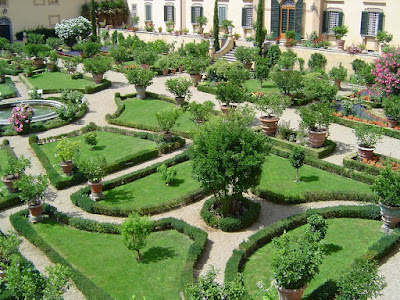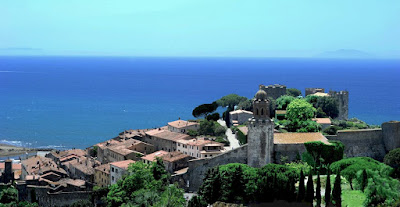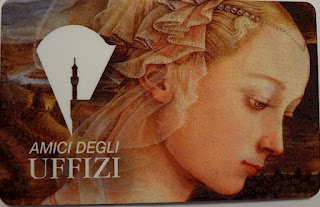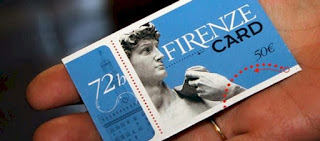Villa Poggio Torselli
 |
| Villa Poggio Torselli in Tuscany, Italy |
Villa Poggio Torselli is a magnificent Tuscan villa located near San Casciano in Val di Pesa just a few km from Florence, and the location of one of the finest italianate gardens in Tuscany, if not the whole of Italy. This villa belonged to the Machiavelli family and later to a long line of Tuscan aristocrats. They also owned the nearby Castello di Bibbione. Niccolò Machiavelli, Renaissance historian, politician, diplomat and writer, and the most famous member of his family, did not live in this villa. When not in disgrace, he lived in Florence except when abroad (meaning away from Florentine territory) on diplomatic missions. When banished from Florence, he lived in his country retreat, Albergaccio Machiavelli, which is to be found at Sant'Andrea in Percussina, not far away from Villa Poggio Torselli.
 |
| Niccolò Machiavelli |
Villa Poggio Torselli is particularly famous for its gardens. These gardens probably date from the late 17 C, and consists of an italianate garden divided into two terraces to the south and an English park area in to the north. In the upper terrace on the south side, the original arrangement with flower beds has been preserved along with a very ingenious irrigation system, one of the best preserved of Tuscany. It was designed with stone basins positioned to favour the flow of water from the highest point to the lowest. The parterre was transformed in mid 19 C according to the English style, but was restored first around 1925 when the box hedging was renewed and then by the present owners, who uncovered one of the original flowerbeds with its irrigation basins.
The conservative restoration called for a renewal of the planting typical of late 18 C gardens. Dwarf fruit trees, old-fashioned roses, aromatic herbs and flowers were planted and act as a frame for the baroque chapel and the architecture of the three-storey villa. When the weather is warm, the potted citrus trees are carried out from the splendid limonaia into the open air.
In addition, the beautiful landscape offers sweeping views of lush greenery extending over about 42 hectares, 25 of which are given over to vineyards and 13 to olive groves.
 |
| The giardino all'italiana of Villa Poggio Torselli |
The Poggio Torselli villa itself is one of the largest, most prestigious and elegant villas found in the hills of San Casciano in Val di Pesa, in the Chianti Classico region of Tuscany. It was once known as the “queen of the villas”. The villa was built on the site of an earlier structure between the late 1600s and early 1700s by Lorenzo Merlini, an architect who was very popular with the Florentine nobility of the day.
The villa consists of a central block and two L-shaped wings which house apartments and offices, a chapel and winter garden. To the south, the wings enclose the giardino all'italiana. The interiors are characterised by colour, tromp l’oeil and allegorical paintings, created at the end of the 17 C by Pier Dandini, Matteo Bonechi and their students. Don't miss the ceilings of the two rooms adjacent to the main hall on the ground floor. You can reach the luxurious rooms and parlours on the upper levels via an astoundingly beautiful staircase.
 |
| The salotto of Villa Poggio Torselli |
|
|
Author: Anna Maria Baldini
All content copyright © ammonet Italian Web Site Promotion 2023. All rights reserved.
























